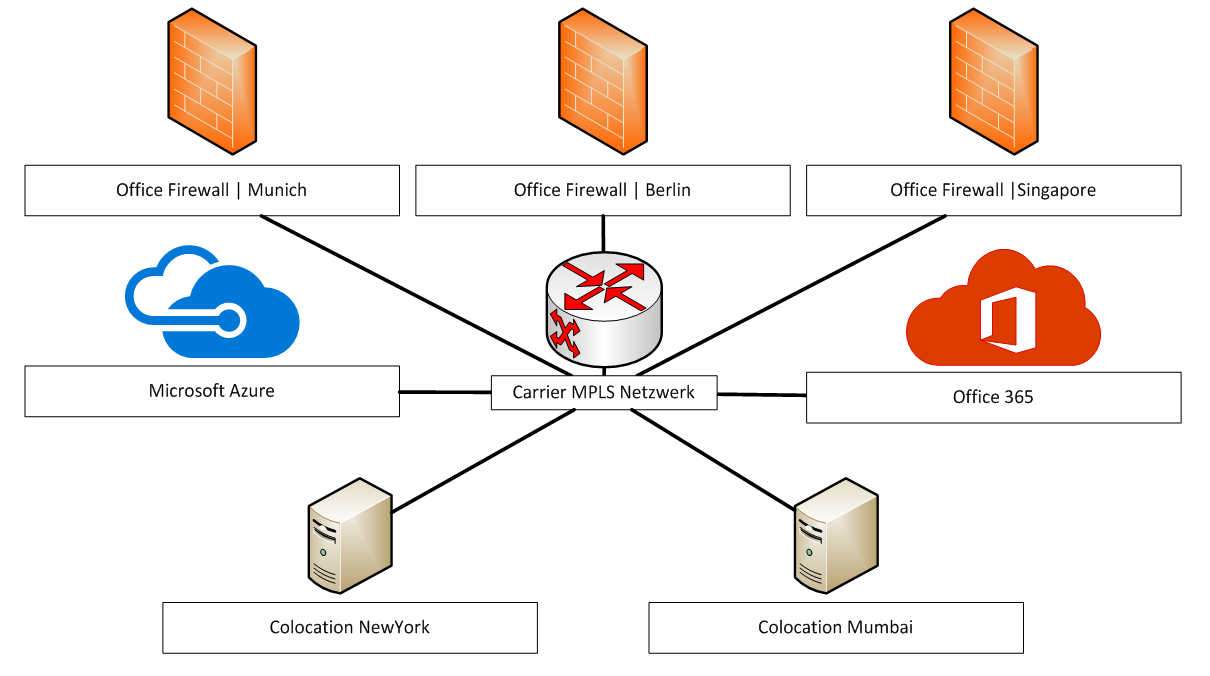Looking at the networking scenarios, the most common one is to integrate Azure and Office 365 directly into your MPLS. Every connection from any location is transmitted via the MPLS network.
The following diagram shows a short abstract of such an environment:

There are also options to use Azure as colocation and connect offices via a VPN. This option is often used by small or medium business companies. There every VPN connection terminates in Azure. Office 365 is reached via Internet from the Office directly:

Another very common form of setting up WAN links to offices or other data centers is to have a primary link via ExpressRoute and a secondary link via a Site 2 Site VPN with BGP enabled. So your services stay available for your users even if your MPLS fails. You only have a performance impact but stay in production. The rerouting will happen automatically because of the enabled BGP:

There are also common scenarios where Azure is used only for online services...



